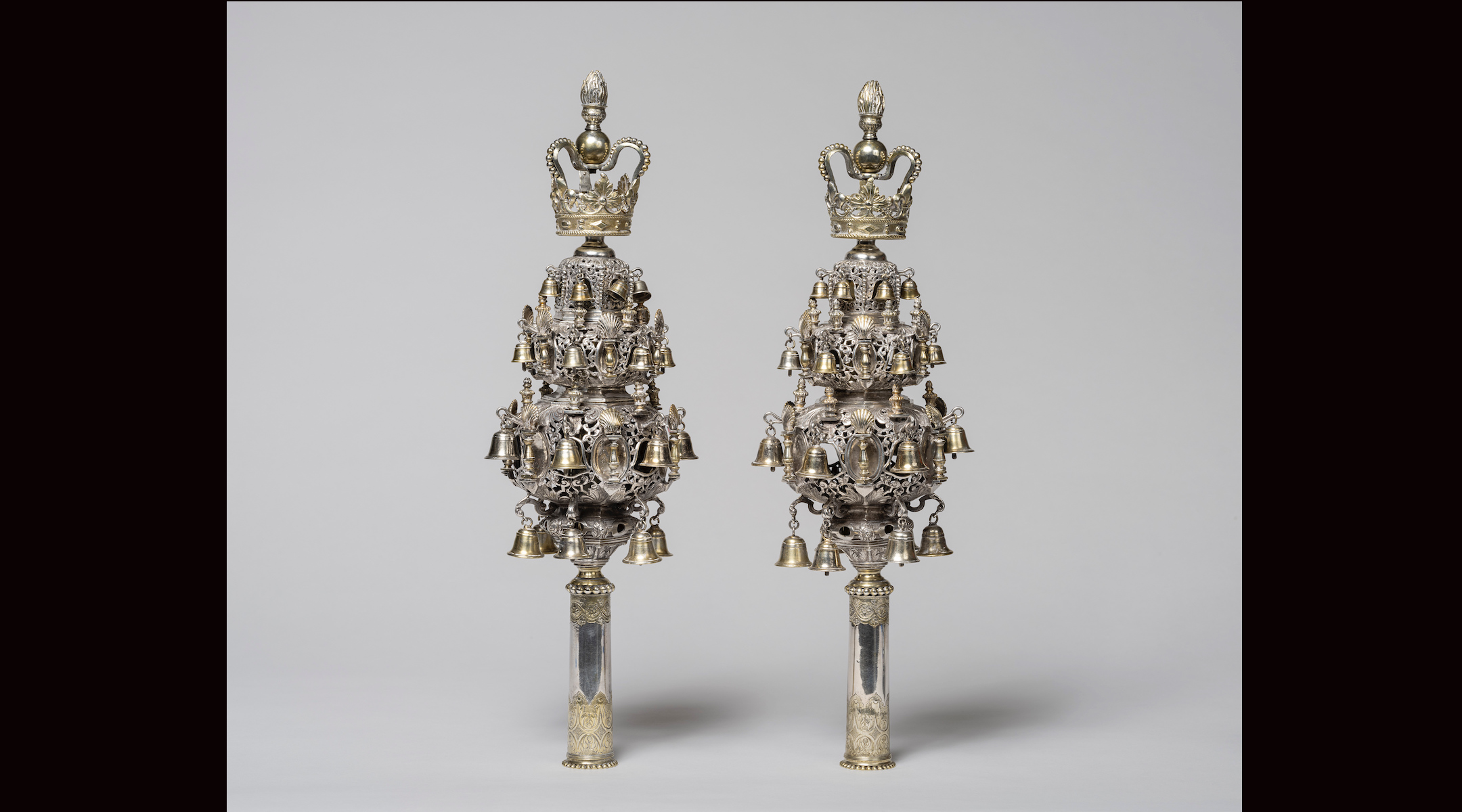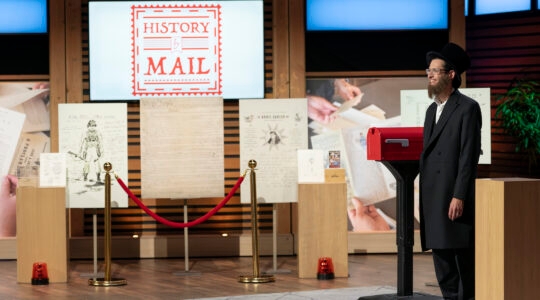BOSTON (JTA) — In 1725, Abraham Lopes de Oliveyra was officially registered as a silversmith in London — the first Jew known to be given a license to practice the trade in the city.
Jews had been let back into England just 70 years beforehand following an expulsion centuries earlier, and Oliveyra’s registration established him as a prolific maker of silver Judaica for the city’s synagogues.
Now, nearly 300 years later, Oliveyra’s work will go on view in American museums for the first time. A pair of Torah ornaments made by the 18th-century craftsman have been bought jointly by Boston’s Museum of Fine Arts and New York City’s Jewish Museum.
“The fact that Oliveyra is the earliest known Jewish silversmith active in England is quite monumental,” Abigail Rapoport, the Jewish Museum’s curator of Judaica, told the Jewish Telegraphic Agency. The ornaments, she said, are a “masterpiece of historical Judaica.”
The pair of ornaments are known as finials, or “rimonim” in Hebrew, and sit on top of the two wooden staves of a Torah scroll when it is not being read. Made in 1729 of partially gilded silver, the finials feature tiers of bells surrounding three flattened spheres that showcase Oliveyra’s distinctive openwork, or design made by creating patterns of holes or piercings in the precious metal.
Oliveyra is also known for his use of the shell motif, a hallmark of the era’s nature-inspired Rococo style. While they were of their time, Oliveyra’s design of the gilded rimonim is a clear reminder of the finials’ Jewish context, in that it alludes to the royal status Jews traditionally confer on the Torah, Rapoport said.
The rimonim are one of only 11 known pairs by Oliveyra. The only other rimonim by the artist in the United States belong to Congregation Shearith Israel, the Spanish and Portuguese synagogue in Manhattan.
“You want to touch them and trace the exquisite design with your fingers and imagine their centuries of precious use,” Rapoport said of the pair in the museum. “It’s almost intangible and magical.”
Oliveyra was born in Amsterdam to a Jewish family of Portuguese descent that had settled in the Dutch city, which was known for its climate of tolerance, after fleeing religious persecution. By his early 30s, he moved to London, where he and other Jewish artisans had become eligible for membership in professional guilds.
That was unusual. Jews in Western Europe, Rapoport said, were typically excluded from artists’ guilds, including the silversmiths’ association, until the 19th century, so most European pieces of Jewish ceremonial art, though commissioned by Jews, were made by Christian silversmiths.
Once Oliveyra began producing silverwork, he was frequently commissioned to create Judaica by Jewish communities in London, which was home to both Sephardic and Ashkenazi Jews. Rapoport said both communities bought Oliveyra’s work.
“I like to think of him as the go-to-guy for finials,” she said.
Rapoport told JTA the museums bought the finials from Gidon Finkelstein, son of the late Belgian diamond dealer and Judaica collector Bernard Finkelstein. They would not disclose the price. A different, less decorated pair of Oliveyra finials sold for $200,000 at auction in 2016, while less substantial finials that could not be authenticated as his handiwork sold at Sotheby’s in June for $25,000.
Other rimonim made by Oliveyra are owned by London’s Sephardic Bevis-Marks Synagogue, which bills itself as “the oldest and most splendid Synagogue in Great Britain,” as well as the Hambro Synagogue, which largely served the city’s Ashkenazi Jews beginning in the 18th century. Several pairs are in the permanent collection of London’s Jewish Museum, with one pair on loan to the city’s Victoria and Albert Museum.
The rimonim purchased by the two American museums are currently on exhibit at the Jewish Museum through late October and will be on view at the MFA beginning in December.
The collaboration between the museums “enhances the opportunity that the rimonim will be viewed by broad and diverse audiences in two different cities,” said Simona Di Nepi, the Judaica curator at the MFA.
Both curators said the rimonim diversify their collections because Oliveyra was Sephardic. Most of the Judaica in their respective collections was made for Ashkenazi communities.
“I really love the exuberance of these Torah finials,” Di Nepi said. “The intricate pierced silver on the body of the finials, and the exquisitely engraved staves.”
JTA has documented Jewish history in real-time for over a century. Keep our journalism strong by joining us in supporting independent, award-winning reporting.






